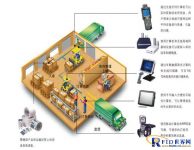
Suzhou Xinhui RFID Warehouse Management System Solution
[ad_1]
I. Overview
The RFID warehouse management system is a platform for cargo identification, tracking, management and inspection of cargo information based on RFID identification technology. The system will be advancedRFIDThe combination of identification technology and computer database management query can automatically identify cargo information. The application of this system can greatly save manpower and material resources, facilitate management, improve efficiency and accuracy, and facilitate data statistics.

2. Limitations of traditional warehousing management systems
1. Traditional warehousing uses manual methods. The recording method is cumbersome, inefficient, simple to make mistakes, and the cost is relatively high, which is particularly inconvenient for statistics and handling.
2. It is not convenient to receive the goods if the order is not properly filled.
3. The semi-automated warehouse management system needs to record the entry and exit of the warehouse first and then enter the computer. Human factors are relatively large, the accuracy is not high, and falsified data simply appear.
4. The requirements for standardized operation of personnel are relatively high, human resources are wasted, and the cost of handling protection is relatively high.
5. Both methods require the storage of goods to be very standardized and need to be counted regularly, which is inconvenient.
6. Inability to provide real-time, rapid, and accurate inventory information for the handlers in order to implement the most reasonable decisions, and may lose customers as a result.
Three, working principle
The main principle of RFID communication is that when the item with RFID tag enters the recognition range of the reader,ReaderAfter reading and decoding the tag (item) information, it is sent to the central information system for data processing.

Four, system function architecture diagram

Five, system transaction flow chart

Six, system advantages
1. Efficiently complete various business operations, improve storage management, and increase efficiency and value.
2. Fully automatic identification of items in the warehouse without human intervention, and multiple items can be identified at the same time to improve accuracy and efficiency.
3. Fast, accurate, automatic data collection, real-time, accurate control of inventory conditions.
4. Reduce the inventory cycle, improve the real-time performance of data, dynamically grasp the inventory situation in real time, and realize the visualization of inventory items.
5. Observe the working conditions of the staff in the warehouse in real time and grasp the work progress.
6. Safely handle inventory to prevent illegal acts such as theft and malicious damage.
7. Reduce manpower and handling costs.
Seven, typical applications
Warehousing materials handling
[ad_2]



